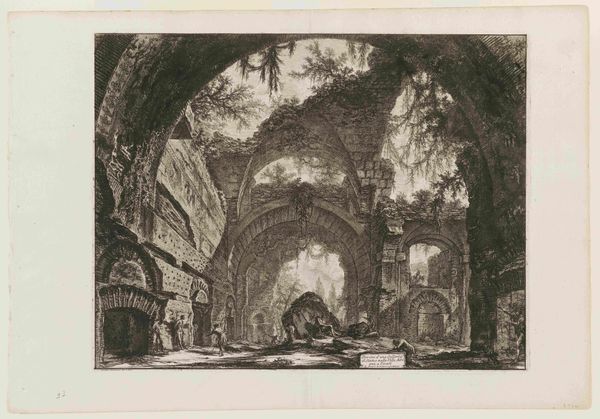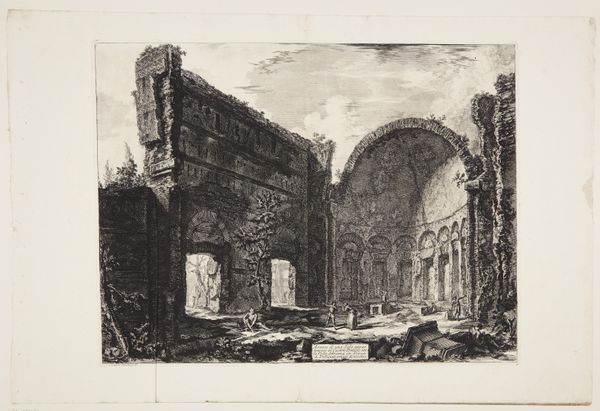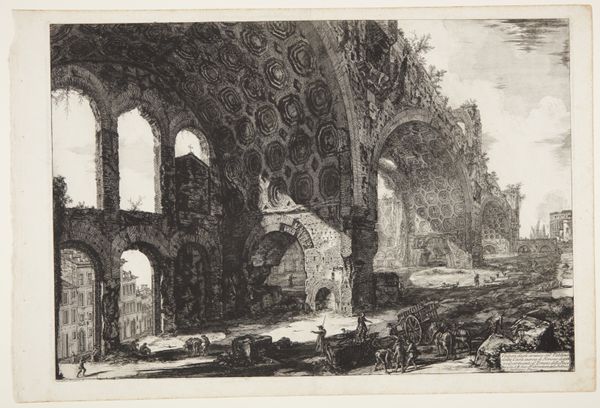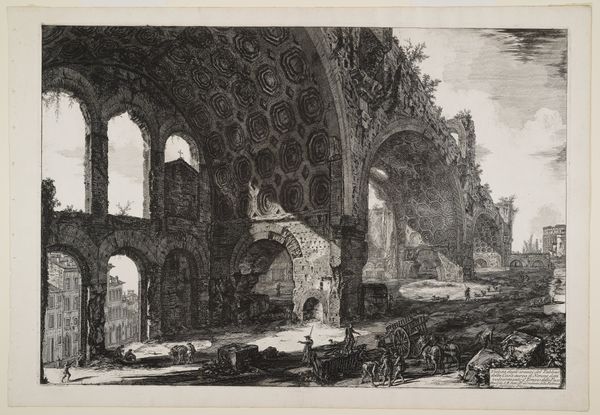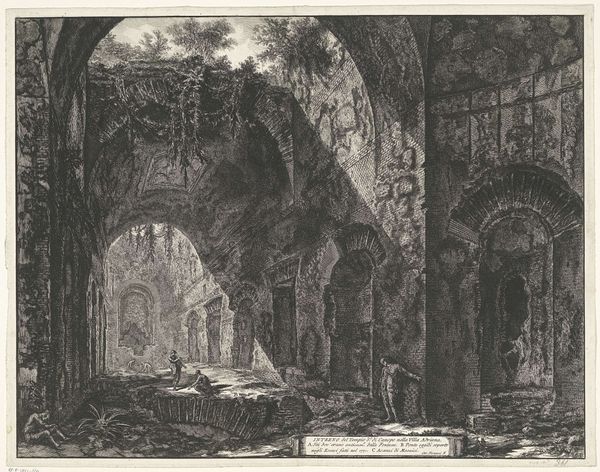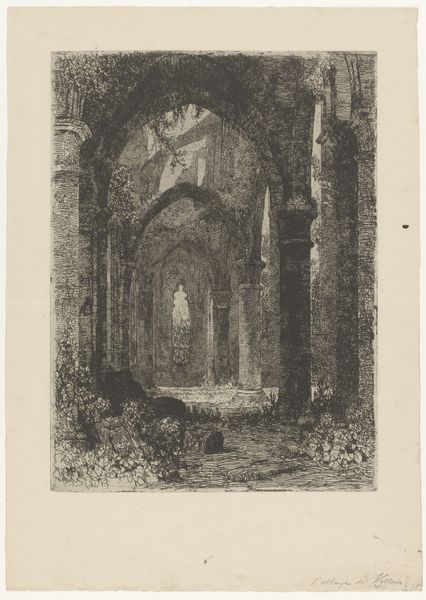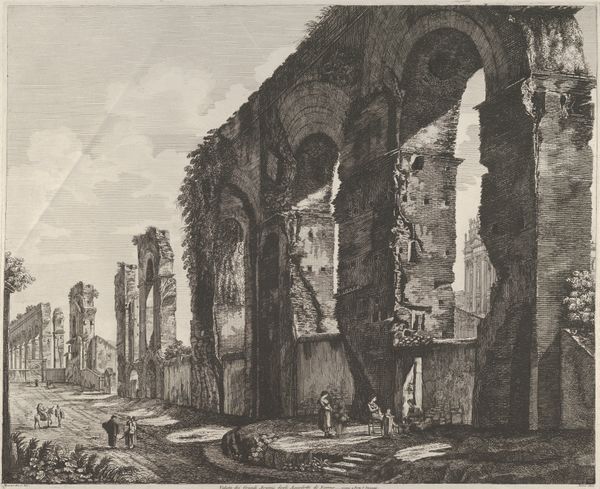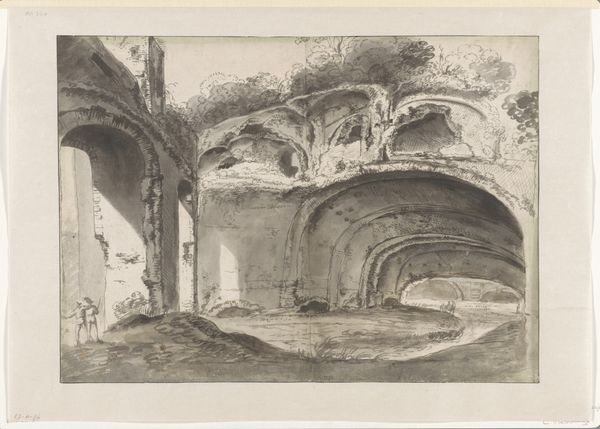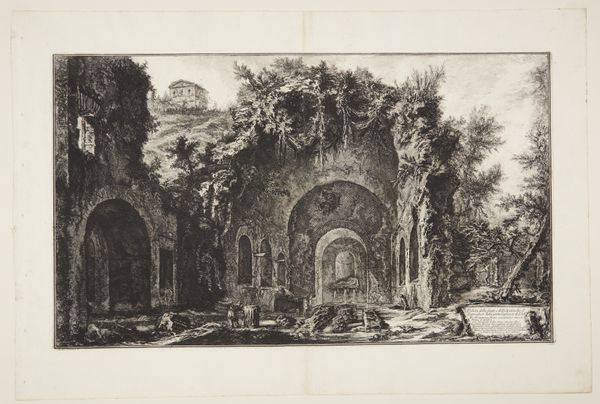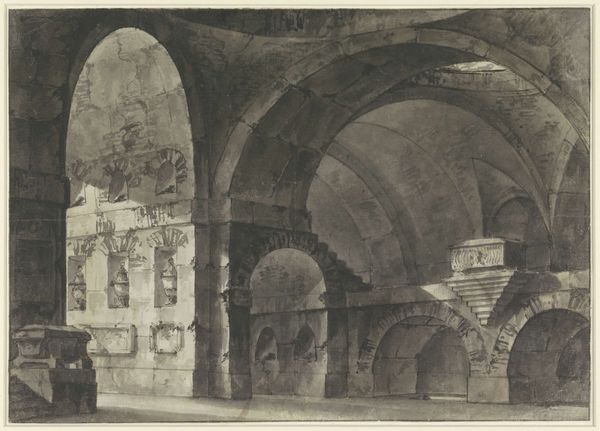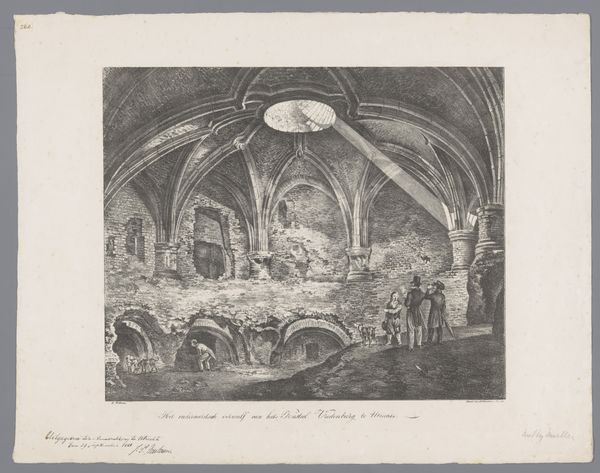
Hadrian's Villa - Interior of the Baths 1770
0:00
0:00
Dimensions: 18 x 23 in. (45.72 x 58.42 cm) (plate)20 1/4 x 29 11/16 in. (51.44 x 75.41 cm) (sheet)
Copyright: Public Domain
Curator: What a fascinating scene. This etching by Giovanni Battista Piranesi, dating back to 1770, is titled "Hadrian's Villa - Interior of the Baths." It's currently held in the collection of the Minneapolis Institute of Art. Editor: My immediate reaction is awe, tinged with melancholy. The scale is impressive, even in a print, but there’s also this pervasive sense of decay and ruin. Curator: Indeed, Piranesi was masterful at capturing the grandeur and the crumbling essence of Roman architecture. The print itself is an etching, a process involving biting lines into a metal plate with acid, then using that plate to create the print. Think about the labor involved in this kind of meticulous detail! It reminds us that the print market offered detailed architectural records to scholars and Grand Tourists eager to acquire this form of cultural capital. Editor: And how successfully he uses that technique to evoke the monumentality and public function of the Baths. One can almost hear echoes of the bustling activity that once filled this space, the whispers and shouts, a palpable connection to a world transformed, rendered sublime by its abandonment. The contrast between the enduring structure and the encroaching vegetation—nature reclaiming human creation—it's a visual testament to the transience of empires. Curator: Exactly! And consider the societal context: 18th-century Europe was obsessed with antiquity. Prints like these democratized access to the ancient world. The ruins of Rome became fashionable, and artists such as Piranesi catered to a growing market for these sorts of souvenirs, reflecting the Grand Tour cultural phenomenon. The aqueduct form that once channeled resources has now collapsed as Piranesi renders nature reclaiming them. Editor: It is clear how he’s shaped public perceptions of Roman history, even influencing Neoclassical architecture in its celebration of ruins. This etching highlights how Piranesi, through printmaking, became an agent in shaping historical narratives. It isn't just about documentation. It’s about constructing a romantic and politically loaded image of the past for his own time. I find myself considering how the economics of art publishing and access intersected to establish and normalize his interpretations. Curator: A powerful thought. And on a material level, consider the implications of reproducibility, in Piranesi’s hands the etching becomes a vehicle that democratizes and proliferates classical narratives across society. What lasting impressions does this artwork impart for you? Editor: I'm left considering the ways that physical materials intertwine with collective memory, subtly informing power structures. What about you? Curator: For me, it underlines how artistic practice itself can shape and be shaped by historical narratives and social appetites.
Comments
No comments
Be the first to comment and join the conversation on the ultimate creative platform.
